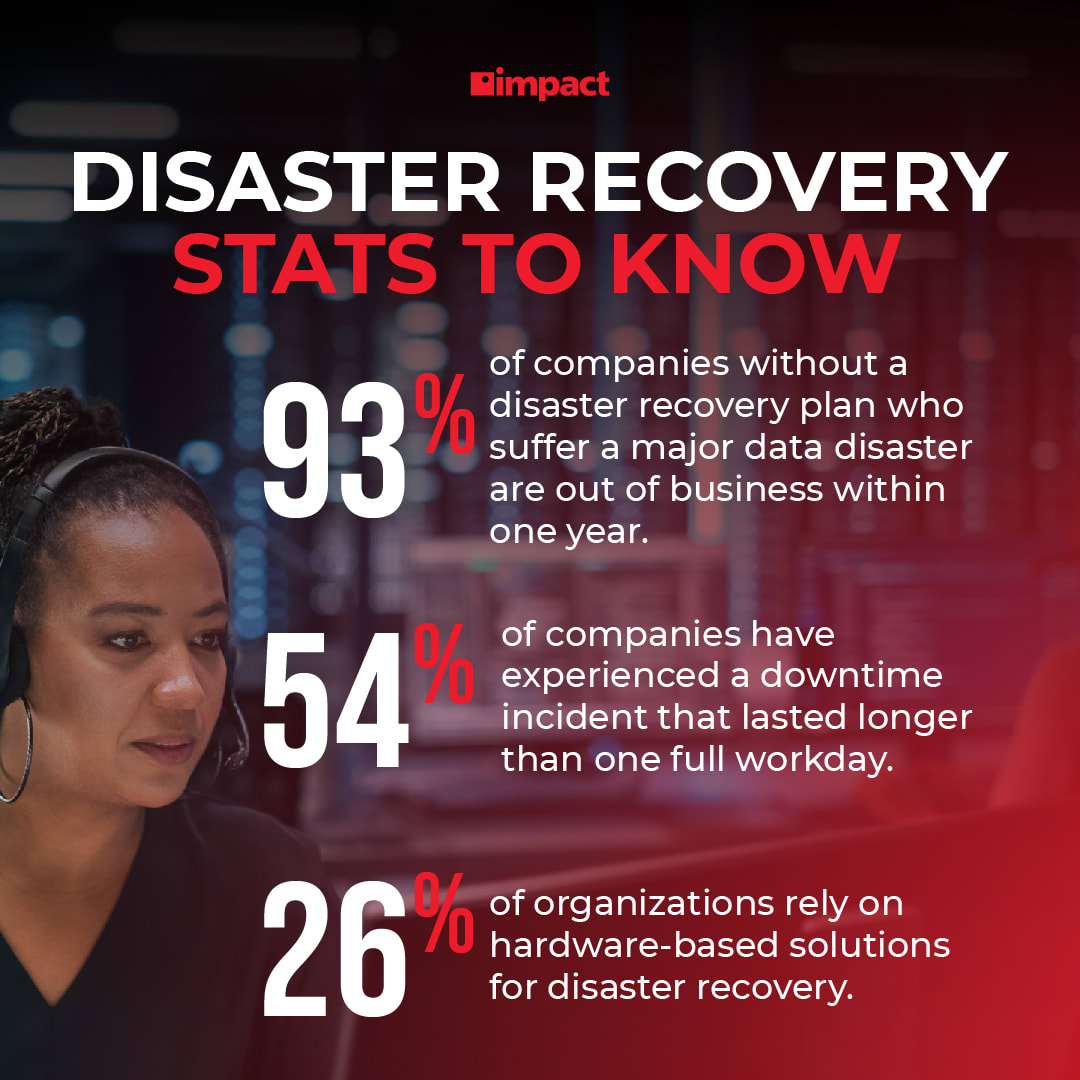What is cloud-based disaster recovery? Why is it so important for businesses to consider today?
In this blog, we’re going to go over exactly that—what it is, its advantages with relation to traditional disaster recovery methods, and what organizations should consider going forward as far as business disaster recovery (BDR) solutions are concerned.
As most businesses will know, planning for the unexpected is an essential part of day-to-day operations, and disaster recovery is no different.
Whether it’s a critical cyberattack or a natural disaster, ensuring data is backed up and operations can be continued as quickly as possible is a crucial element of a solid business continuity plan.
Let’s dive into how cloud-based disaster recovery factors into a continuity plan.
Why Cloud Based Disaster Recovery?
Traditionally, businesses have backed up their data in on-premise servers in a safe location so that information can be recovered should critical IT infrastructure become compromised in some way.
This would require the installation of dedicated IT infrastructure, which would then have to be scaled, maintained, and operated depending on the businesses’ needs at the time.
When a business grows and requires more server capacity, they then must purchase more hardware to accommodate their needs.
With a cloud-based disaster recovery system, the business instead buys server space through the infrastructure as a service (IaaS) model.
This effectively means that businesses purchase a subscription for a private cloud server where data is stored, and then depending on their changing needs the subscription (or contract) can be increased or decreased—this kind of scalability is unique to cloud offerings.
Related Post: Why a Disaster Recovery Plan is Vital for SMBs
How Does It Work?
Cloud-based disaster recovery is actually as simple as typically onsite BDR.
In a traditional backup system with onsite servers, file-based backups are stored locally and, in the event of a disaster—natural or otherwise—can be retrieved and reinstated according to the what the business has in place.
The level of data encryption, redundant power and internet, and ransomware protection will depend on the investment the company has made into its BDR infrastructure.
In a cloud-based setup, you can most often expect an image-based backup approach.
Rather than a traditional file-based approach, which copies individual files and data, an image-based method takes regular snapshots of hard drives connected to the network.
When we talk about an “image” based method, we’re referring to an approach to backing up wherein a hard drive is cloned in its entirety and stored as what’s known as an image—this image can then be stored, saved, and retrieved quickly from an external source (like the cloud data center).
The advantage of image-based backups of a business’ IT infrastructure is that because it clones the entire drive and its operating system and applications, absolutely nothing is lost, as opposed to a file-based approach which (as the name implies) only saves individual files.
In other words, image-based backup systems are more comprehensive because they can allow a full restore of a complete operating system, allowing users to continue operating far more quickly than if they had lost the OS but retained their files.



